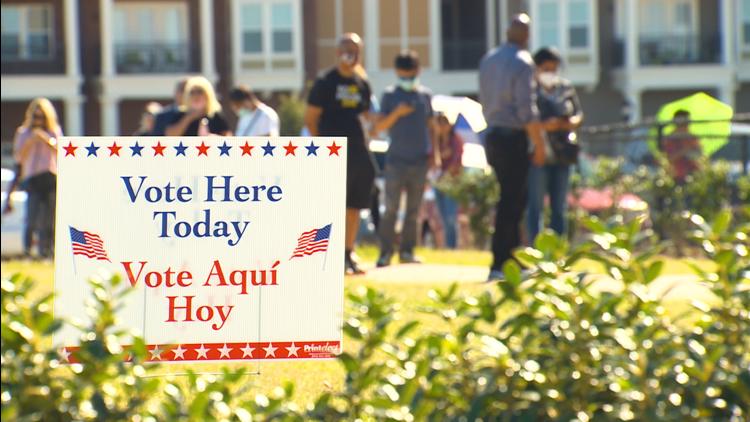
DALLAS — WFAA will have a team of journalists tracking election results across Texas both on air and online when the polls close, using data from local elections offices, the Secretary of State's Office and the Associated Press. Polls open at 7 a.m.
and close at 7 p.m. in North Texas, with early voting data coming in shortly after polls close.
The Associated Press has compiled vote results and declared winners in elections for more than 170 years. AP employs a network of more than 4,000 local reporters who collect results from voting precincts and county election offices when polls close. The vote count reporters call in results to a vote entry clerk, who enters the results in AP’s election systems.
Those clerks also enter results from official sources online, such as county and state election websites, and monitor automated data feeds provided by election officials in some states, matching them up. AP then conducts a series of checks and verification to ensure the results are accurate. “Our goal is to have at least two, and in many cases, three or more sources for vote totals from every county,” AP says on its website.
“Those multiple sources don’t just serve as a backup to each other, but they also provide a check to help ensure the vote totals we are reporting are correct.” WFAA also has a team of journalists monitoring North Texas county elections administration offices where votes are counted and submitted to the secretary of state. We also monitor the secretary of state's vote totals to help provide the latest totals from our local and state elections offices.
As results come in, WFAA utilizes the Associated Press and ABC News to call races. Here’s how the AP calls races: AP’s Decision Team begins research on election rules, how each county and congressional district voted in the past, the state’s past history for voting by mail and early in-person and its history of counting votes (how many are counted after polls close and how many are counted in the days after). That’s followed after polls close with an in-depth analysis of AP’s vote count and results in major races from the AP VoteCast survey.
AP debuted VoteCast in collaboration with the National Opinion Research Center at the University of Chicago to account for the rise in votes cast before Election Day. It’s a probability-based, state-by-state survey of registered voters conducted by mail, phone and online that AP also uses to inform race calls. Race callers collaborate with analysts who focus on statewide races, such as those for U.
S. Senate and governor, and elections for the U.S.
House of Representatives. The editors on AP’s Decision Team sign off on race calls for president, U.S.
Senate and governor, as well as races of significance for the U.S. House.
“They study the incoming vote county by county. In states where the information is available, they look at the vote by type of ballot: cast in person at polling places, or in advance by mail or in person,” AP’s website says. “They are also in constant contact with AP’s vote count team, in search of the latest information about what’s been counted so far and how many ballots may still be left to count.
” Once analysis of that data determines the leader can’t be overtaken by trailing candidates, AP calls a winner. Finally, results are sent to AP customers, who report them on air and online. Results are updated in real-time throughout the evening and in the days following Election Day, until every race is called and state officials certify their results as final.
All states must certify their official results by Dec. 11, according to the National Archives..














